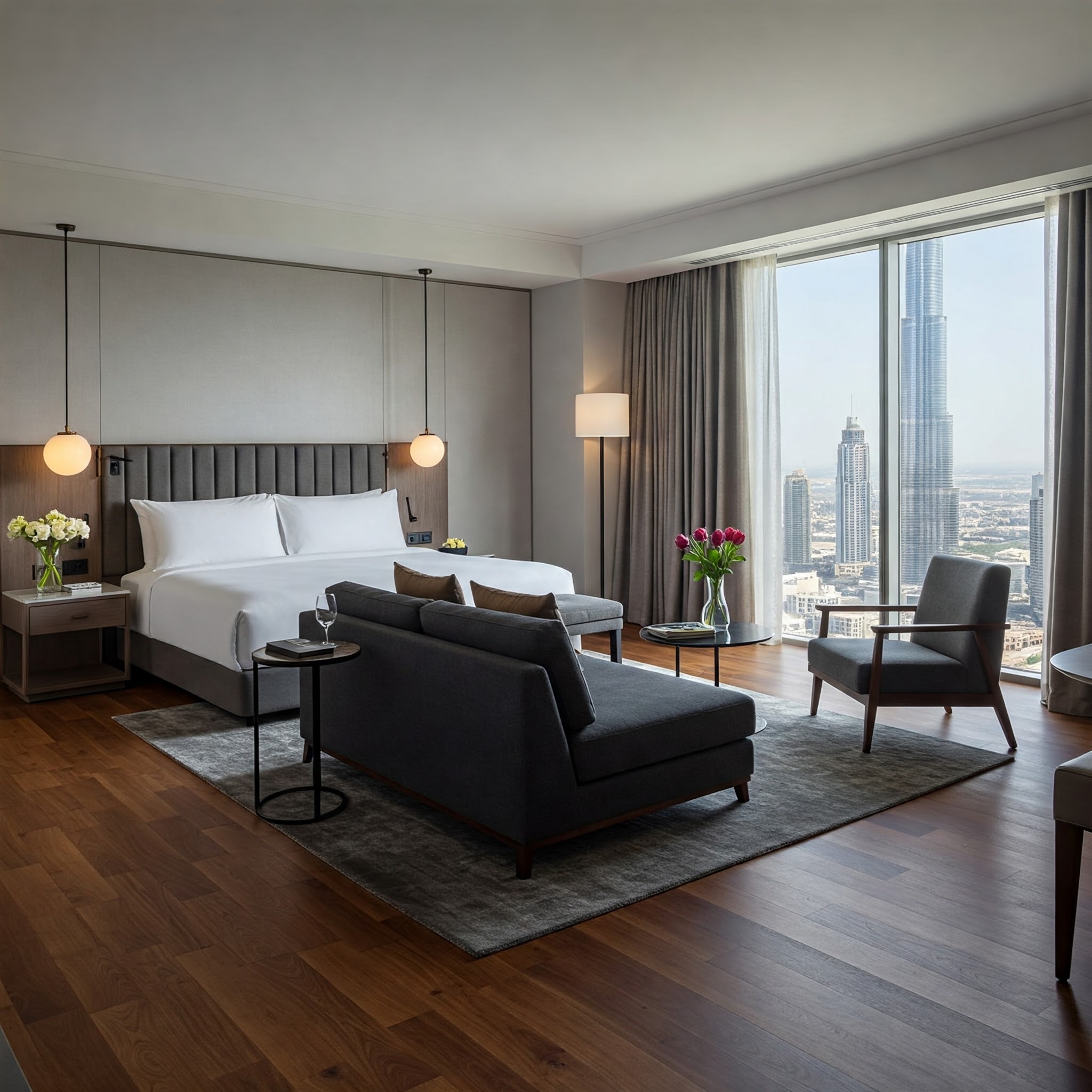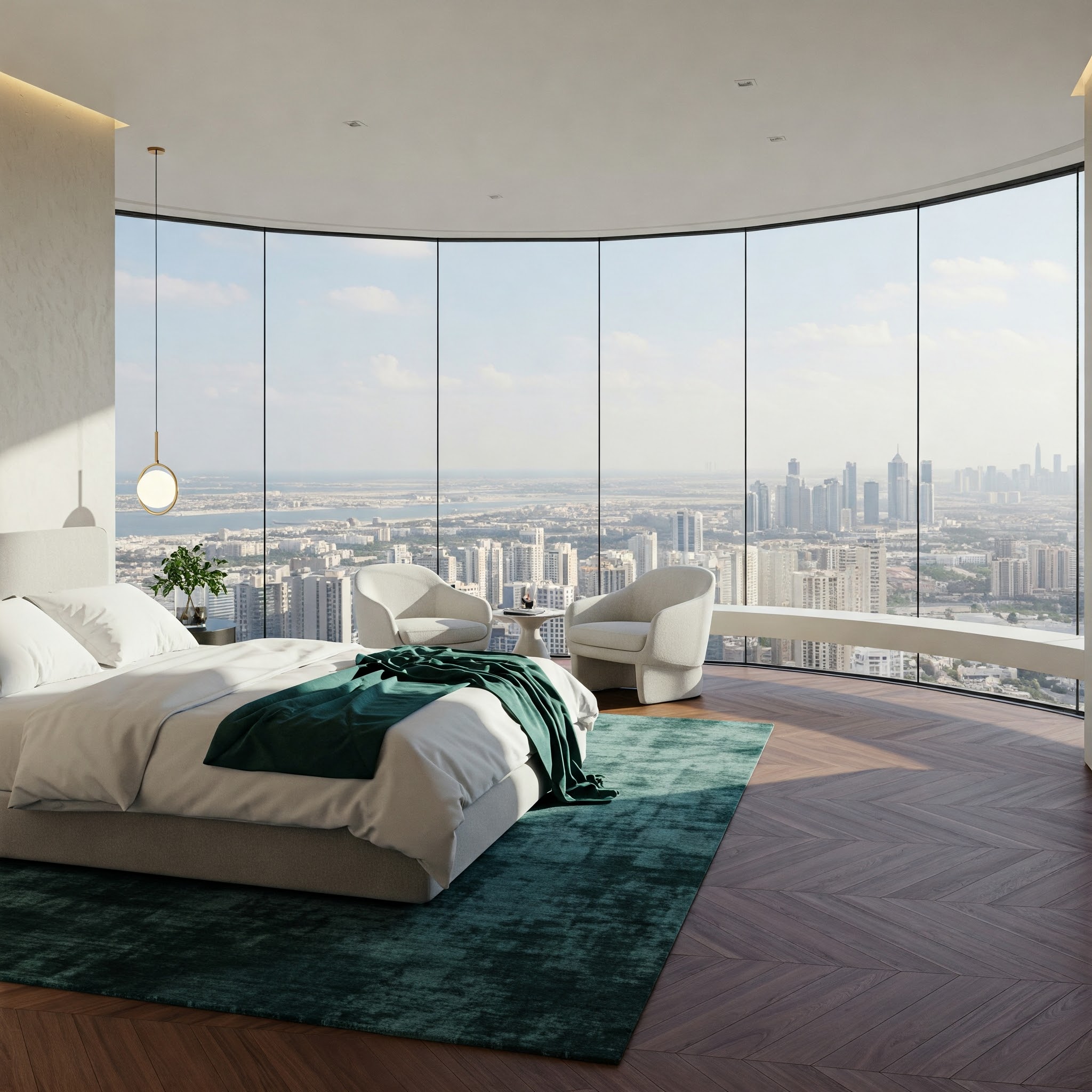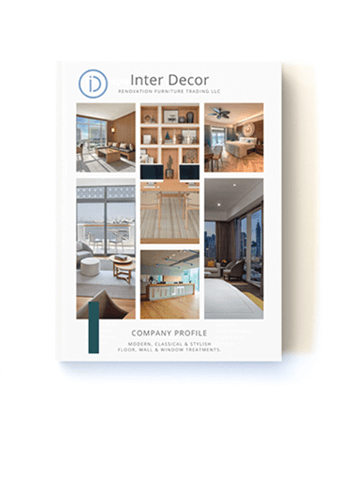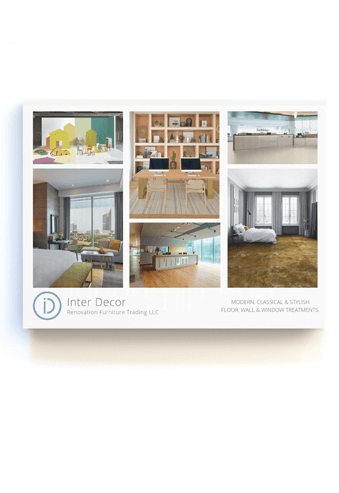Maximizing ROI: Smart Flooring Choices for Modern Businesses
Introduction
In today's competitive business landscape, every decision made can significantly impact a company's bottom line. One often overlooked aspect of business operations that can have a substantial effect on return on investment (ROI) is the choice of flooring. As we delve into the topic of "Maximizing ROI: Smart Flooring Choices for Modern Businesses," it becomes evident that the right flooring selection can contribute to enhanced productivity, improved aesthetics, and reduced long-term costs.
The Impact of Flooring on Business ROI
The selection of appropriate flooring solutions extends far beyond mere aesthetics; it plays a crucial role in determining a business's overall return on investment. A well-chosen flooring system can significantly influence various aspects of an organization's operations, ultimately affecting its financial performance.
Firstly, the durability and longevity of flooring materials directly impact maintenance costs and replacement frequency. High-quality, resilient flooring options may require a larger initial investment but can substantially reduce long-term expenses associated with repairs, cleaning, and premature replacement. This cost-efficiency translates into improved ROI over the lifespan of the flooring installation.
Moreover, flooring choices can have a profound effect on employee productivity and well-being. Ergonomic flooring solutions, such as those with proper cushioning and sound-absorption properties, can mitigate fatigue and reduce noise levels in the workplace. These factors contribute to a more comfortable and productive work environment, potentially leading to increased output and, consequently, enhanced ROI.
Additionally, the aesthetic appeal of flooring can influence customer perceptions and brand image. In retail or hospitality settings, for instance, attractive and well-maintained flooring can create a positive first impression, potentially increasing customer engagement and sales. This indirect contribution to revenue generation further underscores the importance of strategic flooring decisions in maximizing business ROI.
Sustainable Flooring Solutions
In the realm of modern architecture and interior design, sustainable flooring solutions have emerged as a crucial aspect of environmentally conscious construction practices. These innovative flooring options not only contribute to reducing the carbon footprint of buildings but also offer a myriad of benefits to both residential and commercial spaces. By incorporating eco-friendly materials and production methods, sustainable flooring addresses the growing demand for responsible consumption while simultaneously enhancing the aesthetic appeal and functionality of interior spaces.
Energy-efficient Options
Energy efficiency in flooring extends beyond the materials themselves, encompassing the entire lifecycle of the product. Several innovative options have been developed to minimize energy consumption and environmental impact:
1. Cork Flooring: Harvested from the bark of cork oak trees without harming the tree itself, cork flooring offers excellent insulation properties. Its cellular structure traps air, creating a natural thermal barrier that helps maintain room temperature and reduce heating and cooling costs.
2. Bamboo Flooring: Rapidly renewable and highly durable, bamboo flooring requires minimal energy to produce. Its natural properties allow it to adapt to room temperature quickly, reducing the need for additional heating or cooling.
3. Reclaimed Wood: By repurposing existing timber, reclaimed wood flooring significantly reduces the energy required for new material production. It also possesses inherent insulation properties, contributing to overall energy efficiency.
4. Wool Carpet: As a natural insulator, wool carpet helps regulate indoor temperature. Its production requires less energy compared to synthetic alternatives, and it biodegrades at the end of its lifecycle, further reducing environmental impact.
These energy-efficient flooring options not only contribute to reduced utility costs but also align with green building standards, potentially qualifying projects for certifications such as LEED (Leadership in Energy and Environmental Design).
Durability and Reduced Maintenance Costs
Sustainable flooring solutions often boast superior durability, translating to reduced maintenance costs and a longer lifespan. This longevity significantly diminishes the need for frequent replacements, thereby conserving resources and minimizing waste:
1. Polished Concrete: Exceptionally durable and low-maintenance, polished concrete floors can last for decades with minimal upkeep. Their resistance to wear, stains, and moisture makes them ideal for high-traffic areas, reducing the frequency of repairs or replacements.
2. Terrazzo: Composed of recycled glass, stone, or other materials embedded in concrete or epoxy resin, terrazzo flooring offers unparalleled durability. Its seamless surface is easy to clean and maintain, with a lifespan that can exceed 75 years when properly installed and cared for.
3. Linoleum: Made from natural materials like linseed oil, cork dust, and wood flour, linoleum is both eco-friendly and highly durable. Its inherent antimicrobial properties reduce the need for harsh cleaning chemicals, further lowering maintenance costs and environmental impact.
4. Engineered Hardwood: By utilizing a thin layer of high-quality wood atop a more stable core, engineered hardwood offers the aesthetics of solid wood with enhanced durability and reduced expansion and contraction. This stability results in fewer repairs and a longer lifespan compared to traditional hardwood floors.
The durability of these sustainable flooring options not only reduces the frequency of replacements but also minimizes the associated labor, material, and disposal costs. Moreover, their low-maintenance nature often requires less water and fewer cleaning products, further reducing the overall environmental impact and operational expenses of the building.
Health-Focused Flooring
In the realm of modern workplace design, health-focused flooring has emerged as a pivotal element in creating environments that prioritize employee well-being. This innovative approach to flooring not only enhances the aesthetic appeal of office spaces but also significantly contributes to the overall health and productivity of the workforce. By carefully selecting materials and designs that promote better air quality and ergonomic comfort, organizations can create a foundation for a healthier, more efficient workplace.
Indoor Air Quality Improvements
The impact of flooring on indoor air quality is a critical consideration in health-focused workplace design. High-quality, low-emission flooring materials play a crucial role in maintaining a clean and healthy atmosphere within office environments. These advanced flooring solutions are engineered to minimize the release of volatile organic compounds (VOCs), which are known to contribute to various health issues and decreased productivity.
Innovative flooring options, such as bamboo, cork, and certain types of certified low-VOC carpets, have gained popularity due to their ability to naturally purify the air. These materials possess inherent properties that can absorb airborne pollutants and allergens, effectively acting as passive air filtration systems. Moreover, some cutting-edge flooring products incorporate photocatalytic technologies that actively break down harmful compounds when exposed to light, further enhancing indoor air quality.
Regular maintenance of health-focused flooring is equally important in preserving air quality. Many modern flooring solutions are designed to resist the accumulation of dust, pollen, and other particulates, making them easier to clean and maintain. This characteristic not only contributes to better air quality but also reduces the need for harsh cleaning chemicals, further minimizing the introduction of potentially harmful substances into the workplace environment.
Ergonomic Considerations and Employee Comfort
Ergonomic flooring solutions play a pivotal role in enhancing employee comfort and reducing the physical strain associated with prolonged standing or walking in the workplace. The integration of ergonomically designed flooring can significantly mitigate the risk of musculoskeletal disorders and fatigue, thereby promoting overall well-being and productivity among employees.
One of the primary ergonomic considerations in flooring selection is the level of cushioning and support provided. Materials such as rubber, cork, and certain engineered composites offer superior shock absorption properties, effectively reducing the impact on joints and muscles during prolonged periods of standing or movement. This characteristic is particularly beneficial in areas where employees are required to stand for extended durations, such as reception desks, manufacturing floors, or retail spaces.
Furthermore, the texture and surface properties of flooring materials play a crucial role in ergonomic design. Non-slip surfaces can prevent accidents and provide a sense of stability, which is essential for maintaining proper posture and reducing muscle tension. Some advanced flooring systems incorporate micro-textured surfaces that enhance grip without compromising on ease of movement, striking an optimal balance between safety and comfort.
The thermal properties of flooring materials also contribute significantly to employee comfort. Materials with low thermal conductivity, such as wood or carpet, can help maintain a comfortable temperature underfoot, reducing fatigue and enhancing overall comfort levels. In contrast, materials like ceramic tiles or concrete may be less comfortable in colder environments due to their high thermal conductivity.
By carefully considering these ergonomic factors in flooring selection, organizations can create a workspace that not only looks appealing but also actively contributes to the physical well-being and comfort of their employees. This holistic approach to workplace design can lead to increased job satisfaction, reduced absenteeism, and improved overall productivity.
Innovative Designs
In the ever-evolving landscape of office flooring, innovative designs have emerged as a cornerstone of modern workspace aesthetics. These cutting-edge solutions not only elevate the visual appeal of corporate environments but also address the functional needs of contemporary offices. From advanced synthetic materials to nature-inspired elements, the latest flooring designs offer a perfect blend of form and function, catering to the diverse requirements of today's dynamic workplaces.
LVT Advancements for Versatile Aesthetics
Luxury Vinyl Tile (LVT) has undergone significant advancements, revolutionizing office flooring options. Modern LVT products showcase remarkable versatility in aesthetics, replicating the appearance of natural materials with unprecedented accuracy. High-definition printing technologies enable LVT to mimic the intricate patterns and textures of wood, stone, and even fabric, providing a cost-effective alternative to premium materials.
Furthermore, LVT's modular nature allows for creative installations, facilitating unique patterns and designs that can demarcate different zones within an office space. The incorporation of advanced wear layers enhances durability, ensuring that the flooring maintains its aesthetic appeal even in high-traffic areas. This combination of visual appeal, durability, and design flexibility makes LVT an increasingly popular choice for modern office interiors.
SPC Advancements for Modern Office Interiors
Stone Plastic Composite (SPC) flooring represents a significant leap forward in office flooring technology. This innovative material combines limestone powder, polyvinyl chloride, and stabilizers to create a rigid core that offers exceptional stability and durability. SPC flooring's advanced composition addresses many challenges faced in office environments, such as sound transmission and moisture resistance.
Recent advancements in SPC technology have led to the development of products with enhanced acoustic properties, crucial for maintaining a quiet and productive office atmosphere. Additionally, the latest SPC flooring options feature improved dimensional stability, reducing the risk of expansion or contraction due to temperature fluctuations. These characteristics, coupled with a wide array of design options, make SPC an ideal choice for modern office interiors that demand both style and substance.
Elegance of Engineered Timber in Workplaces
Engineered timber flooring has gained prominence in high end office design interiors, offering the warmth and elegance of natural wood with enhanced durability and stability. This innovative product consists of multiple layers of wood, with a high-quality hardwood veneer as the top layer. The layered construction provides superior dimensional stability compared to solid hardwood, making it less susceptible to warping or cupping in varying environmental conditions.
Recent advancements in engineered timber technology have led to the development of products with improved wear resistance and easier maintenance, addressing common concerns in high-traffic office areas. Moreover, engineered timber flooring is available in a wide range of species, finishes, and plank sizes, allowing for customized designs that complement various office aesthetics. The incorporation of this natural element into workplace design has been shown to enhance employee well-being and productivity, making engineered timber a popular choice for creating inviting and sophisticated office environments.
Organic Carpet Tile Designs in Contemporary Office Environments
The evolution of carpet tiles has brought forth a new era of organic designs that seamlessly integrate with contemporary office environments. These innovative carpet solutions draw inspiration from nature, incorporating biophilic elements into their patterns and textures. Advanced tufting and dyeing techniques allow for the creation of intricate, non-repetitive designs that mimic natural landscapes, foliage, and organic textures.
Contemporary organic carpet tile designs often feature subtle color variations and textural differences, creating a more dynamic and visually interesting floor surface. This approach not only enhances the aesthetic appeal of the office space but also contributes to a more relaxing and nature-connected environment. Additionally, many of these organic designs are now produced using sustainable materials and eco-friendly manufacturing processes, aligning with the growing emphasis on environmental responsibility in office design. The modular nature of carpet tiles also allows for easy installation, maintenance, and replacement, making them a practical choice for modern, adaptable office spaces.
Smart Installation Techniques
In the realm of modern flooring solutions, smart installation techniques have revolutionized the way we approach floor renovations and installations. These innovative methods not only streamline the process but also enhance the overall quality and longevity of the flooring. By embracing these advanced techniques, homeowners and professionals alike can achieve superior results with minimal disruption and maximum efficiency. Let's explore two key aspects of smart installation techniques that are transforming the flooring industry.
Adhesive-free and Quick-install Options
The advent of adhesive-free and quick-install flooring options has significantly simplified the installation process, offering numerous benefits to both installers and end-users. These innovative systems utilize interlocking mechanisms or click-and-lock designs, eliminating the need for messy adhesives and reducing installation time substantially.
One prominent example of this technology is the ‘floating floor system’. This method allows planks or tiles to be laid directly over existing subfloors without the need for permanent adhesion. The interlocking edges create a tight seal, ensuring stability and preventing moisture ingress. This technique is particularly advantageous in scenarios where:
- Rapid installation is required
- Minimal subfloor preparation is desired
- Future floor replacement or removal is anticipated
Moreover, adhesive-free installations offer enhanced flexibility for temperature and humidity fluctuations, reducing the risk of warping or buckling. This characteristic is especially beneficial in regions with variable climates or in spaces with radiant heating systems.
Another noteworthy quick-install option is the ‘peel-and-stick tile system’. While this method does involve adhesive, it's pre-applied to the tile backing, simplifying the installation process significantly. These tiles offer:
1. Ease of cutting and fitting around obstacles
2. Immediate usability post-installation
3. Reduced mess and cleanup time
By leveraging these smart installation techniques, professionals can complete projects more efficiently, while homeowners can enjoy a hassle-free DIY experience.
Efficient Renovation Strategies
Efficient renovation strategies are crucial for minimizing downtime and maximizing the impact of flooring upgrades. These strategies encompass a range of techniques and considerations that streamline the renovation process, ensuring optimal results with minimal disruption to daily activities.
One key aspect of efficient renovation is ‘proper planning and preparation’. This involves:
1. Conducting thorough assessments of the existing flooring and subfloor conditions
2. Identifying potential issues such as moisture problems or structural weaknesses
3. Selecting appropriate materials and installation methods based on the specific requirements of the space
By meticulously planning the renovation process, installers can anticipate challenges and develop targeted solutions, thereby reducing unexpected delays and costs.
Another critical strategy is the implementation of ‘modular flooring systems’. These systems offer several advantages in renovation scenarios:
- Selective replacement of damaged or worn areas without disturbing the entire floor
- Easy access to underfloor utilities or wiring
- Flexibility to reconfigure spaces as needs change over time
Furthermore, the adoption of ‘advanced subfloor preparation techniques’ plays a vital role in ensuring efficient renovations. Technologies such as self-leveling compounds and moisture mitigation systems can significantly reduce preparation time while enhancing the overall quality of the installation.
Lastly, the integration of ‘digital tools and technologies’ in the renovation process can greatly enhance efficiency. For instance:
- 3D modeling software for precise layout planning
- Laser measuring devices for accurate room dimensions
- Moisture detection equipment for identifying potential problem areas
By leveraging these efficient renovation strategies, professionals can deliver superior results while minimizing disruption to occupants and optimizing project timelines. This approach not only ensures customer satisfaction but also contributes to the longevity and performance of the newly installed flooring.
Conclusion
In the realm of kitchen remodeling, the delicate balance between cost, aesthetics, and functionality emerges as the cornerstone of a successful project with maximum return on investment (ROI). As we've explored throughout this article, achieving this equilibrium requires careful consideration and strategic decision-making. Homeowners must weigh the financial implications of their choices against the potential for enhanced visual appeal and improved usability. By prioritizing elements that offer the greatest impact on both daily life and property value, such as high-quality countertops or energy-efficient appliances, one can create a kitchen that not only meets immediate needs but also stands the test of time. It's crucial to remember that while trendy designs may be tempting, timeless elegance often yields better long-term results. Moreover, investing in functional improvements that streamline cooking processes and storage solutions can significantly boost the kitchen's practicality, making it more attractive to potential buyers should the time come to sell. Ultimately, the key to maximizing ROI lies in creating a harmonious space that seamlessly blends cost-effective choices with aesthetic appeal and enhanced functionality, resulting in a kitchen that not only serves as the heart of the home but also as a wise financial investment.
FAQs
Choosing the right flooring for your business is a crucial decision that can impact various aspects of your operations, from aesthetics to functionality and even your bottom line. To help you navigate this important choice, we've compiled a list of frequently asked questions about flooring options that can increase your business ROI, promote sustainability, enhance employee health, and boost your brand image.
What are the best flooring options for increasing business ROI?
The best flooring options for increasing ROI include durable materials like luxury vinyl tile (LVT), polished concrete, and commercial-grade carpet tiles. These options offer longevity, easy maintenance, and versatile design potential, ultimately saving costs and enhancing space value.
How do sustainable flooring solutions save costs?
Sustainable flooring solutions save costs through reduced maintenance needs, longer lifespans, and improved energy efficiency. Options like bamboo or recycled materials often require less frequent replacement and can contribute to lower utility bills through better insulation properties.
What are the benefits of health-focused flooring in offices?
Health-focused flooring in offices can improve indoor air quality, reduce noise pollution, and enhance comfort. Materials like cork or rubber flooring can provide ergonomic benefits, reducing employee fatigue and potentially lowering healthcare costs associated with workplace injuries.
How do innovative flooring designs impact brand image?
Innovative flooring designs can significantly impact brand image by creating unique, memorable spaces that reflect company values. Custom patterns, brand colors, or eco-friendly materials can reinforce brand identity, impress clients, and contribute to a positive corporate culture, potentially leading to increased business opportunities







